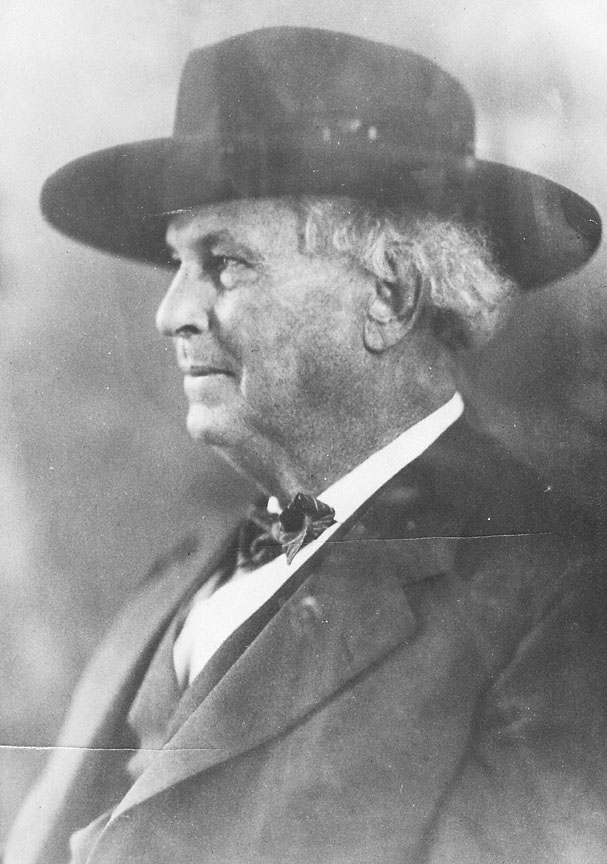This photograph shows William Hanley in his characteristic black Stetson. The photo is undated but was likely taken in the late 1920s or early 1930s.
William Hanley was born in Jacksonville, Oregon, on February 8, 1861. He grew up on a farm and learned the livestock trade at an early age. In a 1914 interview, Hanley remarked that “about as soon as I could stick on a horse I was out with the cattle.” He and his brother John headed east to Harney County in 1879, the advice of their father still ringing in their ears: “get a good valley and water and wait.” Building upon a foundation of Harney County rangeland that he and his brothers purchased, Hanley acquired the established “Double O” Ranch near Harney Lake, begun by Riley and Hardin, and turned it into the county's largest cattle ranch and a showplace of southeastern Oregon.
Bill, as he was known to most neighbors, was famous for his hospitality. He entertained many guests over the years at his Bell A Ranch near Burns, including politically prominent friends and literary acquaintances from Portland, San Francisco, and the East.
A land developer and speculator who initially encouraged more settlement (he owned the powerful Harney Valley Improvement Company), Bill Hanley was also an enthusiastic Progressive-era reformer in the state’s political realm. He ran unsuccessfully both for Oregon governor and as the Progressive Party’s candidate for U.S. senator in 1914. Hanley’s relentless lobbying of his friend, railroad magnate James J. Hill, helped persuade Hill to extend an expensive short offshoot line from the Columbia up the Deschutes River into central Oregon.
In later years Hanley came to see the government’s policy of encouraging small-scale homesteads in the arid region as folly. He also became an advocate for wildlife conservation. A September 16, 1935, Oregon Journal article noted that “it was his hope that the waterfowl might ever find Malheur lake and other waters of Harney county a place of refuge where each might reproduce its kind without molestation. This hope also extended to the protection of the antelope and the deer.”
Hanley died on September 15, 1935, while visiting Pendleton for the Round-Up. The Round-Up’s organizers had declared that day “Bill Hanley Day” to commemorate the “Sage of Harney County.” Hanley’s autobiographical memoir, Feelin’ Fine!, provides an expansive portrait of the man and the high desert.
Further Reading:
Hanley, William. Feelin’ Fine!: Bill Hanley’s Book. Edited by Anne Shannon Monroe. Garden City, N.Y., 1930.
Written by Jeff LaLande, Cain Allen, © Oregon Historical Society, 2005.
